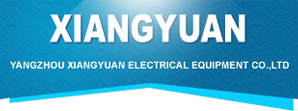
News
Wind power equipment: one of the series of research reports on the power equipment industry
- Categories:Industry news
- Author:
- Origin:
- Time of issue:2018-10-27 09:51
- Views:
(Summary description)Investmentpoints ◇Theglobalwindpowerindustryisdevelopingrapidly.Theglobalwindenergyisabout2.74×109MW,ofwhichtheavailablewindenergyis2×107MW,whichis10timeslargerthanthetotalamountofwaterenergythatcanbe
Wind power equipment: one of the series of research reports on the power equipment industry
(Summary description)Investmentpoints ◇Theglobalwindpowerindustryisdevelopingrapidly.Theglobalwindenergyisabout2.74×109MW,ofwhichtheavailablewindenergyis2×107MW,whichis10timeslargerthanthetotalamountofwaterenergythatcanbe
- Categories:Industry news
- Author:
- Origin:
- Time of issue:2018-10-27 09:51
- Views:
Information
Investment points
◇ The global wind power industry is developing rapidly. The global wind energy is about 2.74 × 109 MW, of which the available wind energy is 2 × 107 MW, which is 10 times larger than the total amount of water energy that can be developed and utilized on the earth. As of the end of 2006, the total installed capacity of wind power in the world is only 74,223 MW, and the development prospects of wind power are promising. In the past decade, the global wind power industry has developed greatly, with an average annual growth rate of 30%.
◇ China's wind power industry has entered a period of high-speed and benign development. In the "Strategic for Medium and Long-term Development of Renewable Energy (2004-2020)" prepared by the National Development and Reform Commission, it is proposed that by 2020, the total installed capacity of wind turbines in China should reach 30 million kilowatts, accounting for 2.71% of the total installed capacity of power generation in China. As of the end of 2006, the total installed capacity of wind turbines in China was only 2.6 million kilowatts, accounting for only 0.42% of the total installed capacity of power generation in China. The government has formulated a series of support policies, including online support policies, tax incentives, and electricity price management policies.
The bottleneck of the whole machine manufacturing technology needs to be resolved. At present, China has mastered the production technology of megawatt wind turbines. In 2006, a 1.5 MW generator set was born. However, these megawatt-class domestic generator sets have not yet entered mass production and need to be tested by practice. Foreign giant companies have been able to produce 5MW wind turbines, which is a big gap.
◇Parts demand exceeds supply. At present, China has been able to independently produce blades, gearboxes, motors and other components, but has not yet mastered the production technology of yaw system and electronic control system, which constitutes the constraints of localized production. As the demand for the whole machine remains strong, and the production of parts and components is far behind the production requirements of the whole machine, it is optimistic about the parts production company.
I am optimistic about the leading enterprises in the industry. As a complete machine manufacturer, Goldwind Technology is undoubtedly the leader in the industry. Goldwind Technology is listed on the market and is expected to drive a large number of enterprises engaged in wind power manufacturing. Hunan Electric Power Co., Ltd., Huayi Electric and other listed companies engaged in the production of wind turbine components are expected to have better performance.
1. The development potential of the wind power industry is huge from a global perspective
1.1 Demand is strong, wind power industry is ushered in historical development period
On February 16, 2005, the Kyoto Protocol came into force, which stipulated that industrialized countries would reduce their total greenhouse gas emissions by 5% from 1990 to 2008. 140 countries around the world will seek renewable energy to replace traditional energy such as coal and oil, and many countries including China have legislated to ensure the production of renewable energy. In renewable energy, the utilization of wind energy is the most commercial value. The reason is that wind energy research technology is relatively mature, and it is actually becoming a booming emerging industry. Biomass energy and solar energy technology still need to be studied, and the cost is relatively high. .
1.2 The world's wind energy reserves are huge, providing guarantee for the development of wind power industry
About 2% of the energy radiated by the sun to the surface of the earth is converted into wind energy. The global wind energy is about 2.74×109 MW, and the available wind energy is 2×107 MW, which is 10 times larger than the total amount of water energy that can be developed and utilized on the earth. As of the end of 2006, the total installed capacity of wind power in the world is only 74,223 MW, and the development prospects of wind power are promising.
In the past decade, the global wind power industry has developed greatly, with an average annual growth rate of 30%, and experts predict that this trend will not reverse in the foreseeable future. However, due to the manufacturing capacity of wind power products, the growth rate will slow down, and the growth rate in 2008 is forecast to be 7.7%. If the countries concerned adopt more active policies to support the development of the wind power industry, the growth rate is expected to be more optimistic.
1.3 The use of wind power generation in all major regions of the world
1.3.1 Policy support will ensure that the EU continues to be the vanguard of the wind power market
The EU is the most developed region in the world's wind power industry. By the end of 2006, the cumulative installed capacity of wind power was 48,062 MW, accounting for 65.18%. In 2007, 3.3% of the EU's electricity demand was supplied by wind power, and it is estimated that by 2030, this proportion will be expanded to 25%. Correspondingly, the wind power equipment manufacturing industry is the most developed in the EU, and VESTAS, GAMESA, NORDEX, REPOWER and other major global wind power equipment manufacturers are all in the EU. This is closely related to the EU's support for the development of the wind power industry.
1. Internet support policy
Most countries in the European Union have adopted this policy, requiring power companies to fully purchase electricity supplied by wind power companies, and the purchase price must not be lower than a fixed value, which is generally higher than the market price, but the specific practices vary from country to country. :
country
Electricity price policy
Germany
Adopting a fixed price system, the price of wind power online at the beginning of 2007 was set at 8.19 euro cents, while the benchmark price was 5.17 euro cents.
Denmark
Adopting the price linkage system, the wind power price is equal to the NORDPOOL market price plus the environmental subsidy of 1.3 euro cents.
Spain
The price of wind power online is composed of the market electricity price plus a subsidy of 3 euro cents. Only the project items of 50MW or more can obtain this payment price.
United Kingdom
Adopting the bidding system, the difference between the bidding contract price and the average electricity trading market price is subsidized by the government, and the subsidy fee is derived from the “fossil fuel tax” levied by the government.
2. Quota system
Countries including the United Kingdom, Sweden, Italy, Belgium, and Poland have adopted quota systems. For example, in July 1999, the United Kingdom enacted and passed the Renewable Energy Obligation Order, which requires power suppliers to purchase a certain proportion of renewable energy, and the proportion of renewable energy is determined by the government according to renewable energy every year. Development goals and market conditions are determined. By 2010, 10% of the electricity resources should be guaranteed to come from renewable sources to ensure the government's overall goals.
1.3.2 Tax incentives stimulate the US wind power industry to flourish
In 2006, the total installed capacity in the United States was 11,603 MW, and the newly installed capacity was 2,454 MW, which was a rapid growth for two consecutive years. This was due to the US Congress' extended tax incentives until 2008. Therefore, it is expected that the US wind power industry will continue to expand in 2007 and 2008. .
1.3.3 India catches up and shares a feast of wind power
Due to a series of tax incentives, India has experienced tremendous growth in the wind power industry in recent years and has become the world's fourth largest wind power producer. In 2006, the total installed capacity of wind power was 6,300 MW, which was 1430 MW higher than that of 2005. However, the trend will still be strengthened. The Indian government plans to propose that the total installed capacity of wind power will reach 10,000 MW by 2010, which means 12.2% per year. The annual average is in line with the growth rate. India's wind power products can not only meet domestic demand, but also have recently begun to export overseas, and the technology has reached the international advanced level.
2. Wind power equipment will be favored by Chinese investors
China is a signatory to the "Kyoto Protocol" and has the obligation to reduce pollution gas below a certain limit. In the case of strong energy demand, China must develop renewable energy, especially wind energy. The introduction of the "Renewable Energy Law" has provided good policy support for the development of China's wind power industry, but compared with the available wind energy of 700-1200 GW in China, the total installed capacity of 2.6 million MW at the end of 2006 is still low. This gap will be covered by subsequent investments.
2.1 China's wind energy resources are large in reserves and concentrated in distribution.
China has a vast territory, with a total length of more than 20,000 kilometers, more than 18,000 kilometers of coastline, and more than 5,000 islands in the edge of the sea, rich in wind energy resources. According to the national average wind power density map drawn by the Chinese Academy of Meteorological Sciences, the total wind energy reserves of China's land 10m level are 3.226 billion KW, and the actual exploitable wind energy resources reserve is 253 million KW. The wind energy resources of the offshore wind farm can be developed. It is three times that on land. According to this, the wind energy resources that can be developed in China are about 1 billion KW. The annual average wind speed of existing wind farm sites in China has reached more than 6 m / s.
Scan the QR code to read on your phone

Tel : 0514-87385218

Add : Fangxiang Industrial Concentration Zone,Northern Suburbs, Yangzhou

Email : luyuanjun@yzxiangyuan.com
Products
Customer message
Description:






